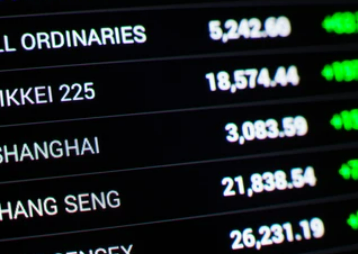
Charlie Brooks
Feb 24, 2023 11:34

Thursday ended positively on Wall Street, with the S&P 500 snapping a four-session losing trend, as investors pondered the impact of interest rate policy on the U.S. economy.
This year, stock markets have been volatile, falling in February after a robust January as investors pondered the Federal Reserve's plans for interest rates. Data indicating a robust American economy have been interspersed with hawkish policymaker comments.
The number of Americans filing new claims for unemployment benefits decreased unexpectedly last week, the Labor Department reported on Thursday, reflecting constrained labor market conditions.
A separate report verified the economy grew robustly in the fourth quarter, with rising inventories accounting for the majority of the expansion.
According to the government's second estimate, the gross domestic product increased 2.7% in the fourth quarter. Economists predicted a 2.9% increase.
Jack Janasiewicz, lead portfolio strategist at Natixis Investment Managers Solutions, stated, "If you're a bull, you can find plenty of supportive factors, and if you're a bear, there are plenty of supportive factors you can refer to."
"There are so many cross currents that are moving in opposite directions that I find it extremely difficult to rely on one or two factors. This is causing a great deal of hand-wringing uncertainty, and as a consequence, we are range-trading."
The S&P traded below its 50-day moving average of 3,980 points for a portion of the day before rallying in the afternoon to close above 4,000 points for the first time this week.
According to Nomura strategist Charlie McElligott, this intraday decline was influenced by significant trades in short-dated derivatives, which piled on selling pressure.
Nvidia (NASDAQ:NVDA) Corp posted positive earnings and surged 14% after forecasting quarterly sales above estimates and reporting an increase in the use of its chips to fuel artificial intelligence services, thereby boosting buyer confidence.
Other chipmakers also increased in value, with Broadcom (NASDAQ:AVGO) Inc, Intel Corp (NASDAQ:INTC), and Qualcomm (NASDAQ:QCOM) Inc gaining between 0.6% and 1.8%. The Philadelphia SE Semiconductors index increased by 3.3%.
The Dow Jones Industrial Average increased 108.82 points, or 0.33%, to 33,153.91, while the S&P 500 gained 21.27 points, or 0.53%, to 4,012.32 and the Nasdaq Composite rose 83.33 points, or 0.72%, to 11,590.40.
Seven of the eleven main S&P 500 sectors advanced. Energy prices rose 1.3% due to higher petroleum prices, and the index ended a seven-day losing streak. This is the longest sequence of declines since a March 2017 slide of eight sessions.
Communication services was the largest decliner, dropping 0.7%. This was its fifth consecutive loss, mirroring the streak in October. It was weighed by Netflix Inc (NASDAQ:NFLX), which slipped 3.4% on reports the streaming service was reducing subscription prices in 30 countries.
Among other equities, eBay Inc (NASDAQ:EBAY) experienced the largest daily decline since September 13, falling 5.2% after forecasting weak demand in the first half.
Moderna (NASDAQ:MRNA) fell 6.7% to its lowest closing price since November 3 after the vaccine manufacturer reaffirmed its annual sales forecast of $5 billion for its COVID-19 vaccines, despite fourth-quarter sales exceeding estimates.
In contrast, Bumble Inc. rose 7.5%. The proprietor of the eponymous dating app projected annual revenue growth in excess of market expectations due to optimism regarding the growth of paying users.
Volume on U.S. exchanges was 10.43 billion shares, compared to the average of 11.59 billion shares over the previous 20 trading days.
The S&P 500 recorded seven new 52-week highs and three new lows, while the Nasdaq Composite registered 59 new highs and 128 new lows.

Feb 24, 2023 11:21
